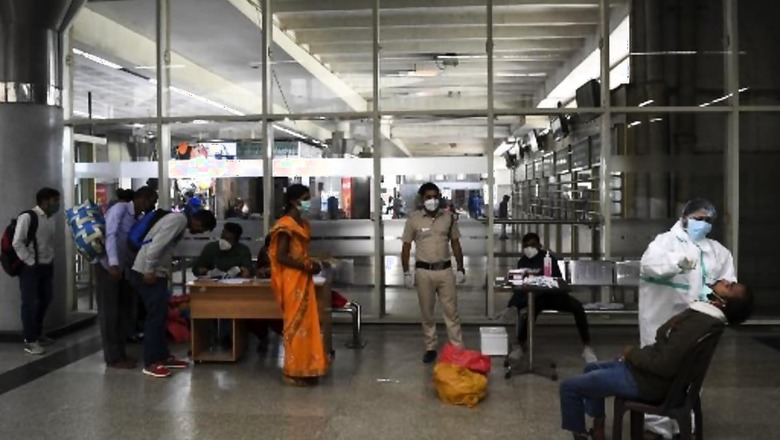
views
India will be the worst affected among the world’s major economies even after the coronavirus pandemic wanes, with output 12% below pre-virus levels through the middle of the decade, according to global forecasting firm Oxford Economics.
According to a report in Bloomberg on Thursday, balance sheet stress that had been building before the coronavirus outbreak will probably worsen. The International Monetary Fund (IMF) predicts the GDP to shrink 10.3% in the year to March 2021 as Prime Minister Narendra Modi’s sudden lockdown paralysed activity. While a sharp rebound is forecast as economic activity resumes, there are lingering scars.
Oxford Economics has revised downwards its India growth forecast over the medium term to an average 4.5% over 2020-25, from its pre-pandemic projection of 6.5%. In a research note, it said India’s post-COVID-19 scars could be among the worst in the world.
“We forecast India’s growth equilibrium to worsen substantially over the medium term, with potential growth averaging just 4.5% over 2020-2025 in our latest baseline, as opposed to our pre-virus forecast of 6.5%,” Oxford Economics said, adding that an adequate and well-designed fiscal stimulus would halve this impact by limiting deterioration in pre-COVID-19 headwinds.
“But, given the low likelihood of such a comprehensive response, we project India’s GDP per capita to be 12% below our pre-virus baseline even in 2025, implying the largest amount of scarring among major economies globally,” Oxford Economics said. It added that the Indian government has announced various schemes and reforms this year, with an eye on the medium-to-long-term growth.
“However, its policy implementation track record is mixed and is likely to have been weakened further by recent social and institutional developments that detract from its capacity to focus on economic policymaking,” said the firm. Beyond 2020, it said India remains one of the most rapidly growing economies in our baseline.
“But, that is not enough to preclude a large medium-term output loss in the wake of COVID-19,” it said.
Oxford Economics said even after the pandemic is contained, India’s economy will have to deal with its aftermath. “It’s likely that headwinds already hampering growth prior to 2020 such as stressed corporate balance sheets, elevated non-performing assets (NPAs) of banks, the fallout in non-bank financial companies (NBFCs), and labour market weakness will worsen,” it noted. The resulting long-term scars, it said, would probably among the worst globally and would push India’s trend growth substantially lower from pre-COVID-19 levels.
Oxford Economics said despite having one of the most stringent lockdowns globally, India’s direct fiscal response to COVID-19 so far amounts to just 2.5% of GDP, with the lion’s share of the $230 billion fiscal package earmarked for liquidity and financing support schemes.
“While we forecast that the central government’s fiscal deficit will widen to 7% of GDP in 2020-21 from 4.7% in 2019-20, it’s unlikely to deliver a meaningful boost to growth because it’s not the result of a surge in spending,” it argued.
Oxford Economics said it expects private investment to continue to be held back by both macroeconomic and financial factors. On the Production Linked Incentive (PLI) scheme, the global forecasting firm said that while not a reform in itself, the scheme is an important fiscal incentive that could impart a significant boost to manufacturing and investment in principle.
Read all the Latest News, Breaking News and Coronavirus News here



















Comments
0 comment